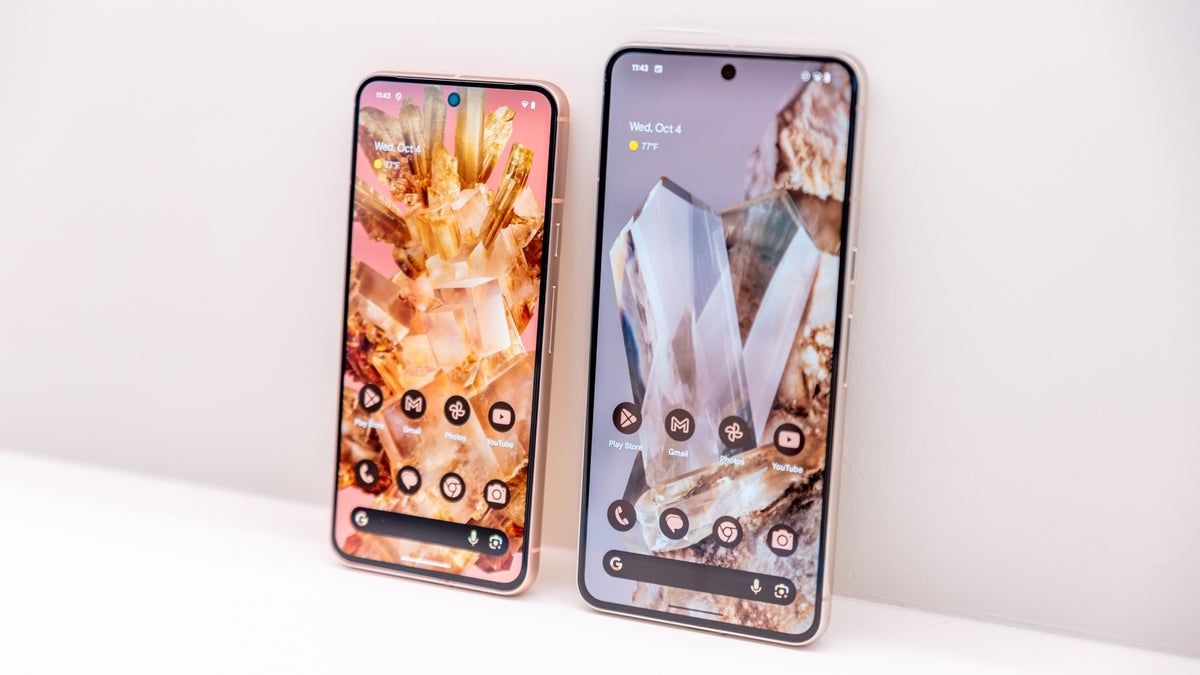Google quietly enabled display output on the Pixel 8 series with the latest beta

One of Google Pixel's biggest weaknesses may have been partially addressed in the latest Android 14 QPR3 Beta 2. Surprisingly, the ability to mirror the phone screen to an external display using a USB-C cable has been quietly enabled on the Pixel 8 series.
According to Android Authority (via Mishaal Rahman), Google has flipped the script with the recent release of Android 14 QPR3 Beta 2, enabling the DisplayPort Alternate Mode by default on the Pixel 8 and 8 Pro. Because of this, users now see a "mirror display" option when connecting a compatible USB-C cable or adapter.
Pixel phones have historically lacked DisplayPort Alternate Mode. This feature uses the USB-C port to transmit video signals, simplifying connections for laptops and mobile devices. On Pixel devices released before the 8 series, this functionality was actually disabled on a hardware level, requiring a special DisplayLink adapter if you really wanted to use it.
However, with the Pixel 8 and Pixel 8 Pro, Google quietly added this capability back to the hardware while still not offering a native software option to use it, unless you enabled it with root access... until now. As discovered, Android 14 QPR3 Beta 2 now automatically prompts you when you connect a compatible USB-C cable and asks if you want to mirror the display.
However, with the Pixel 8 and Pixel 8 Pro, Google quietly added this capability back to the hardware while still not offering a native software option to use it, unless you enabled it with root access... until now. As discovered, Android 14 QPR3 Beta 2 now automatically prompts you when you connect a compatible USB-C cable and asks if you want to mirror the display.
Of course there are caveats
It should be noted that using the feature in its basic form, just mirrors your phone's screen as is. Unlike Samsung phones, Pixels lack a robust desktop-like experience on external displays, such as DeX. Android, ironically, has offered a basic desktop mode since version 10, but it primarily serves as a developer tool. This can be enabled, though, by enabling the "force desktop mode" option in Android's developer options.
Google has been working on a more polished user-facing version of desktop mode that many believe may debut with Android 15, though that's unconfirmed. This revamp includes better handling of freeform windows, crucial for a flexible desktop.
Since the company did not include this feature in the changelog for QPR3 Beta 2, it remains uncertain whether this current display output enabling was intentional or if future updates will restrict it. There are theories claiming that Google has intentionally held this feature back from Pixel phones because of its lack of a mature desktop mode. This calls into question why Google would enable it now before its revamped desktop mode is officially revealed.
The Pixel 8's newfound screen mirroring, whether intentional or not, hints at Google's desktop ambitions. The company's silence makes guessing games necessary, but one thing seems clear: stock Android is getting closer to the desktop-like flexibility seen on rivals like Samsung DeX.
Since the company did not include this feature in the changelog for QPR3 Beta 2, it remains uncertain whether this current display output enabling was intentional or if future updates will restrict it. There are theories claiming that Google has intentionally held this feature back from Pixel phones because of its lack of a mature desktop mode. This calls into question why Google would enable it now before its revamped desktop mode is officially revealed.
The Pixel 8's newfound screen mirroring, whether intentional or not, hints at Google's desktop ambitions. The company's silence makes guessing games necessary, but one thing seems clear: stock Android is getting closer to the desktop-like flexibility seen on rivals like Samsung DeX.
Follow us on Google News













Things that are NOT allowed:
To help keep our community safe and free from spam, we apply temporary limits to newly created accounts: